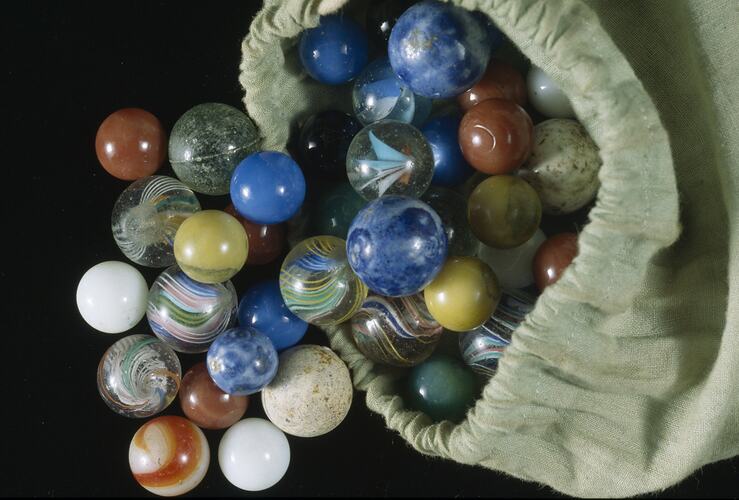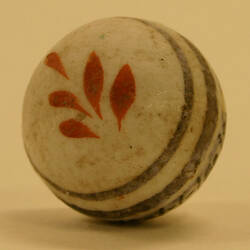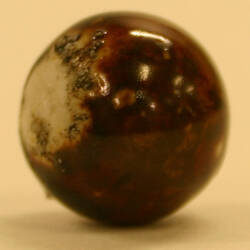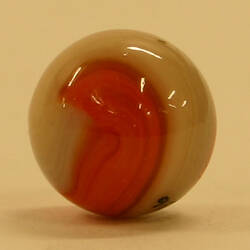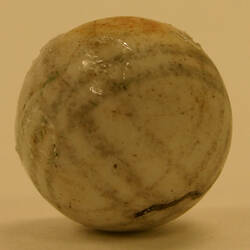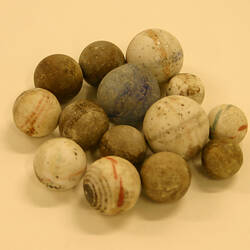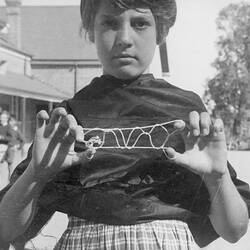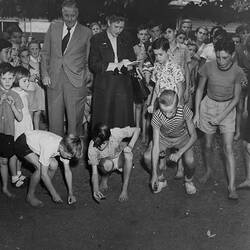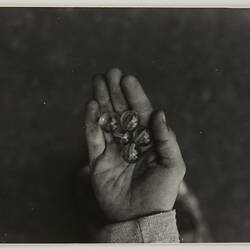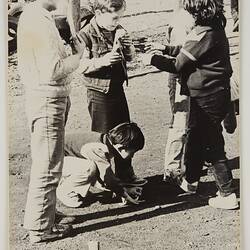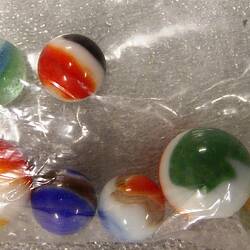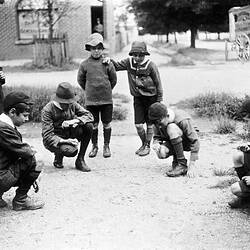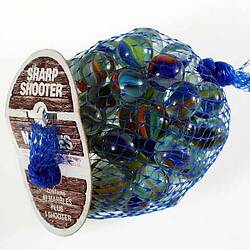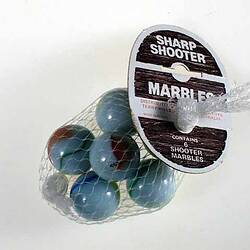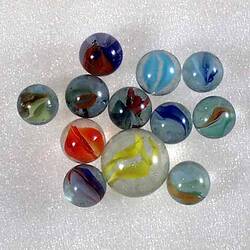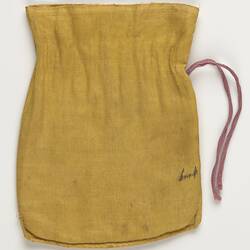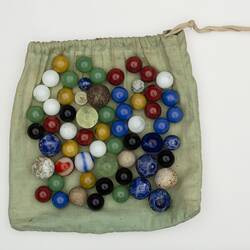Marbles is an ancient game found throughout the world. There is a commonality in the way it is played which transcends cultural differences. In Australia marbles is one of the most familiar games across all ages and cultures.
What are marbles made from?
Marbles today are typically made of glass but in the past were made of many different materials. The earliest recorded marbles were made from stone and clay; the introduction of glass allowed colour to be added. Egyptian marbles, made over 2000 years ago of real marble and of glass, can be found in the British Museum.
In the late 19th-early 20th century, marbles made of agate were the most expensive and highly prized. Marbles made of alabaster were also very valuable. The term 'allies' for marbles came from the 'alabaster'. Alan Marshall in his 1955 memoir I Can Jump Puddles remembered that 'reallies' (real alabaster marbles) were worth one shilling.
Playthings recovered from the Little Lonsdale archaeological site in Melbourne, dated around 1880, include porcelain, glass and clay marbles. Clay marbles - known as commonies - were the cheapest. John Clarke recalls glass marbles that were 'much coveted, which my parents roared with laughter at because they used to be found in the tops of lemonade bottles'. These lemonade bottle marbles, which held the pressure of the carbonated contents, were typically plain and rough to touch. Marbles made for blind baking of pies could also be used for play.
Found objects such as nuts from indigenous native plants, shells and wood were used as marbles by Aboriginal children in different parts of Australia. Ambrose Golden-Brown (Aboriginal name Gnaio) in NSW made marbles out of yellow and white clay moulded together to create streaks just like store-bought marbles (Hope, 1984). Daisy Bates refers to a game played by west Kimberley boys with a species of nut called birrirr-birrirr baaloo that they would roll along the ground (Haagen, 1994).
Growing up in northern Italy in the 1940s, Lidio Bertelli describes making marbles out of stone because they were unable to afford metal or glass marbles.
How much are they worth in the playground?
Over the centuries children developed their own trading schemes. In the 1860s Sir Joseph Verco recalled the main types of marbles were agate, glass allies, stoneys and commonies. 'Agates were the most costly and of course the most highly prized, and one agate was equal to several glass allies, more stonies and still more commonies' (Verco, unpublished manuscript).
The list below shows swapping values in two Melbourne schools in the 1980s. Note that at Alphington Primary school in 1988 the clay marble was the most valuable!
Alphington Primary School Melbourne, 1988
One claypot = one hundred cat's eyes (but no one would ever swap)
One claypot = two spaghettis
One claypot = ten ice-cream jellies
One tiger's eye = five cat's eyes
One bird cage = five cat's eyes
One beach bum = two cat's eyes
One beach bum = one oily
One oily = three cat's eyes
An inner city Melbourne primary school, 1985
Ordinary (clear marble with one colour) = 1
Butterfly = 2
Cat's eye (clear marble) = 5
Bird cage = 7
Bisketti (spaghetti) = 7
Big marble (tombowler) = 2
Earth marble = 100
Big earth marble = 200
What's in a name?
Marble names vary enormously from place to place and from generation to generation. The names below were recorded in Melbourne in 1988 and in Carlisle, Western Australia in 1954. Notice there is only one name in common.
Alphington Primary School, Melbourne, Victoria 1988
Cat's Eye; Beach Bum; Bird Cage; Ice-cream Jelly; Spaghetti; Tiger's Eye; Claypot; Egg; Blue Moon; Broccolli; Coke; Bloodsucker; Pearl.
Carlisle, Western Australia 1954
Daig; Alley; Agate; Blood Real; Tomboller; Pee-Wee; Cat's Eye; Duck's Egg; Bot Stonk; Ball-Bearing; Honey-Sucker; Shirley.
For more information on new and old Marble types and names see Judy McKinty's website:
https://www.eenymeeny.net/marbles%20gallery/marbles.html. Judy McKinty is a Melbourne based play researcher and facilitator specialising in children's traditional play.
References
Australian Children's Folklore Collection: You're It exhibition and the Play and Friendships in a Multicultural Playground project.
Haagen, C., 1994. Bush Toys: Aboriginal Children at Play. Canberra: Aboriginal Studies Press.
Marshall, A., 1955. I Can Jump Puddles, Penguin Group (Australia) reprint, 2010.
Hope, C., 1984. Themes from the Playground, Melbourne. Thomas Nelson.
Verco, J., 1860s. Early Memories (unpublished manuscript). South Australia. Mortlock Library.
More Information
-
Keywords
-
Localities
-
Authors
-
Article types
